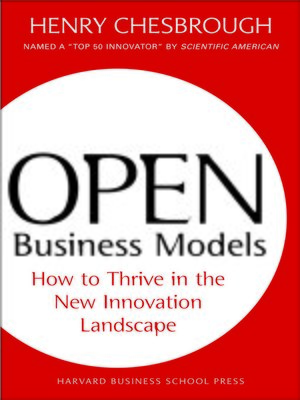
Sign up to save your library
With an OverDrive account, you can save your favorite libraries for at-a-glance information about availability. Find out more about OverDrive accounts.
Find this title in Libby, the library reading app by OverDrive.



Search for a digital library with this title
Title found at these libraries:
| Library Name | Distance |
|---|---|
| Loading... |
In his landmark book Open Innovation, Henry Chesbrough demonstrated that because useful knowledge is no longer concentrated in a few large organizations, business leaders must adopt a new, “open" model of innovation. Using this model, companies look outside their boundaries for ideas and intellectual property (IP) they can bring in, as well as license their unutilized home-grown IP to other organizations.
In Open Business Models, Chesbrough takes readers to the next step—explaining how to make money in an open innovation landscape. He provides a diagnostic instrument enabling you to assess your company's current business model, and explains how to overcome common barriers to creating a more open model. He also offers compelling examples of companies that have developed such models—including Procter & Gamble, IBM, and Air Products.
In addition, Chesbrough introduces a new set of players—“innovation intermediaries"—who facilitate companies' access to external technologies. He explores the impact of stronger IP protection on intermediate markets for innovation, and profiles firms (such as Intellectual Ventures and Qualcomm) that center their business model on innovation and IP.
This vital resource provides a much-needed road map to connect innovation with IP management, so companies can create and capture value from ideas and technologies—wherever in the world they are found.
In Open Business Models, Chesbrough takes readers to the next step—explaining how to make money in an open innovation landscape. He provides a diagnostic instrument enabling you to assess your company's current business model, and explains how to overcome common barriers to creating a more open model. He also offers compelling examples of companies that have developed such models—including Procter & Gamble, IBM, and Air Products.
In addition, Chesbrough introduces a new set of players—“innovation intermediaries"—who facilitate companies' access to external technologies. He explores the impact of stronger IP protection on intermediate markets for innovation, and profiles firms (such as Intellectual Ventures and Qualcomm) that center their business model on innovation and IP.
This vital resource provides a much-needed road map to connect innovation with IP management, so companies can create and capture value from ideas and technologies—wherever in the world they are found.







